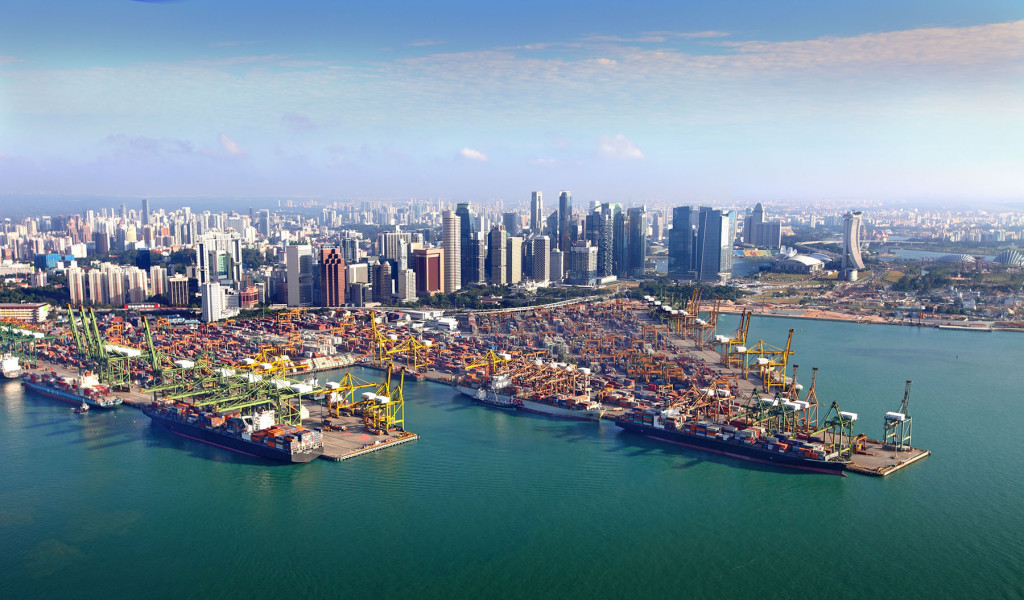The title gives away the suspense. I want it to be clear from the outset where I am heading: greening ports and their cities can only succeed if cities and ports work on this together. Put differently: I think we cannot talk about green ports in isolation, we need to include the urban dimension. Basically because of three reasons: impact, instruments and implementation.
Impact
Most ports are urban ports, so the majority of port impacts is felt in the city. There are some good reasons for this.
Ports are historically linked with cities and this continues to be the case, despite the emergence of non-urban ports. These non-urban ports have been created on the most appropriate sites for port development, with a lot of space, which typically lacks in cities. Ports have often moved to the edges of cities, but real non-urban ports remain the exception and more logical for transhipment ports, whereas for gateway ports being close to consumers and producers is predominant.
So this means that in most cases port impacts are in fact urban impacts. Polluting ships have health effects for urban citizens, and the same can be said for dust, noise and smell. Congestion from port trucks could mean longer commuting times for people working and living in the port-city. More space for a port might mean less parks, less public space
Some examples: around half of the total SOx emissions in Hong Kong are for shipping, some highway stretches in Los Angeles are for 85% occupied by port trucks, and the physical space of port of Antwerp represents around a third of the land surface of the city. In short, port impacts are in many cases urban impacts.
Instruments
The second reason for treating the greening of ports in interaction with their cities is the interrelatedness of policies.
There are basically three sorts of instruments, categorised according to where they approach the problem: ship, port or city. Or put differently: the source, transmission or receptor. One can mitigate the source, obstruct the transmission and insulate the receiver from the impacts.
Applied to air pollution from ships this could mean: shore power to mitigate the source, buffer zones to dilute the pollution and isolation of buildings to minimise impacts for the receiver. But a much wider array of policies could be captured in such a schematisations, including noise and transport impacts, and even economic impacts from ports.
The right policy mix depends on local circumstances: in some cases it could be more effective to focus on the source, in others to focus on the receptor. So defining the right policy mix should be a comprehensive consideration: only looking at the port might be sub-optimal.
Singapore Tanjong Pagar Terminal.
Implementation
The third reason not to treat greening of ports in isolation, is the dependence of ports and cities on each other on getting the policies implemented.
First of all, a considerable number of ports are locally controlled ports. The city could be the sole or main shareholder, city representatives could be in the board of the port and – increasingly rare these days – ports as part of the city administration. In these ports, the main strategic direction of the port needs to be supported by the city and aligned to the strategy of the city.
Second, cities might have instruments that can facilitate greener ports. Think of zoning, local land use plans, local taxes and incentives.
Third, ports might have instruments that can facilitate greener cities. For example ports air emission policies and the instruments that could be connected to these: shore power, LNG bunkering facilities, incentives for slow steaming, fuel switches, energy efficient ship designs and clean port trucks.
Fourth, both ports and cities are dependent on other actors and other governments to achieve the greening of the port-city. Their alignment of policy aims can help to effectively lobby other levels of government.
In conclusion
Collaboration between ports and cities is necessary for effective green ports policies – and for effective green urban policies for that matter. A simple illustration in point is that the cities with the greenest port policies also tend to be the greenest cities; make a list of port-cities in the C40 and ports that have shore power facilities or other far reaching green policies; and you will find remarkable overlaps.
Ports and cities often had antagonistic relationships for understandable reasons: they sometimes have conflicting aims and interests. However, in many cases these relationships have evolved from trade off to win-wins.
Reaping these wins requires a change in mindsets and a more integrated approach. All too often shipping people go to shipping conferences, ports people to ports conferences and city people to city conferences. It is time to move beyond this silo approach and start to think about collaboration.
Head Image: Gothenburg Port.
